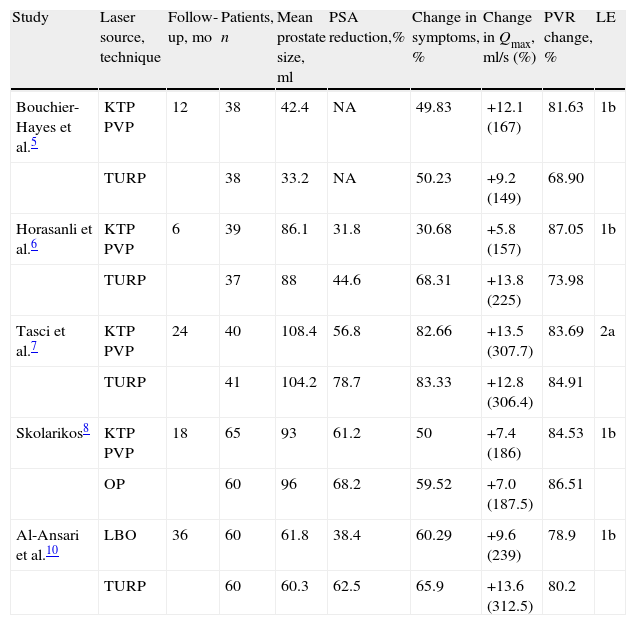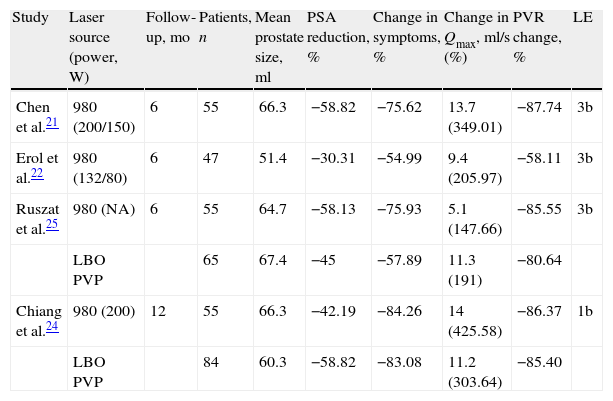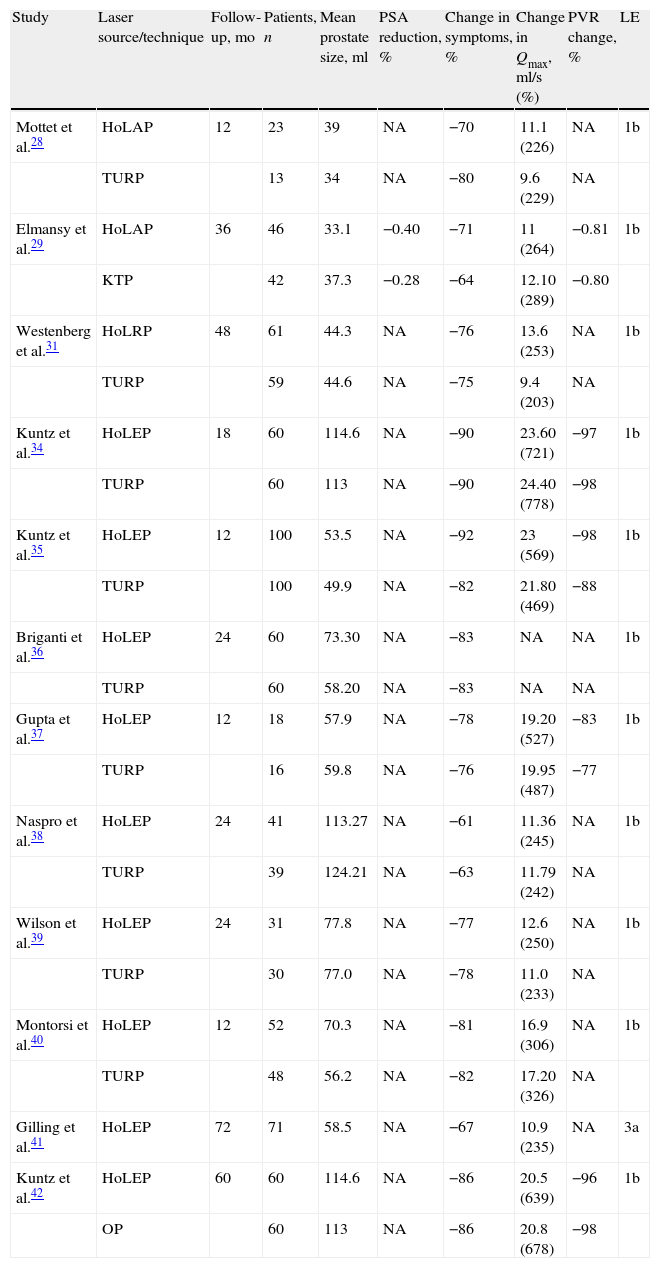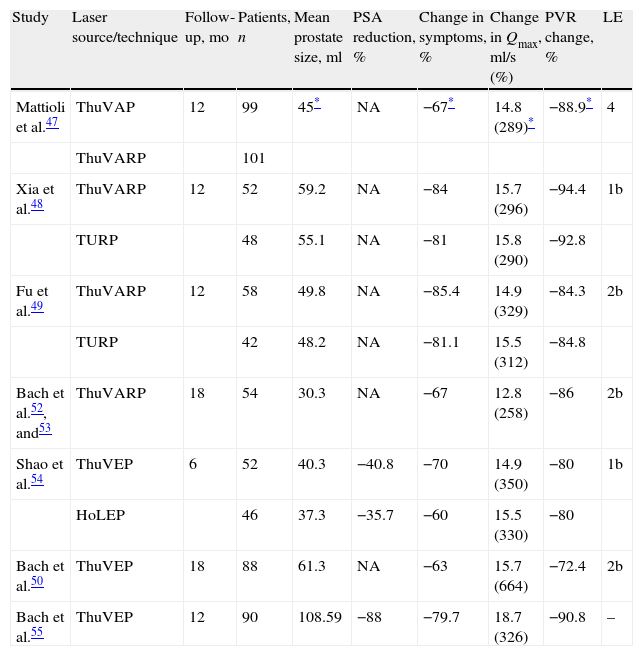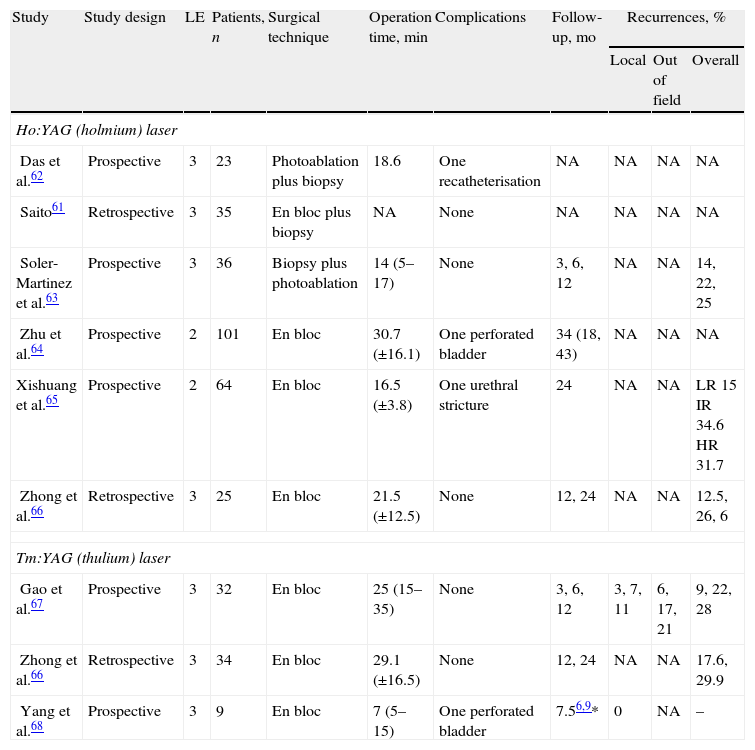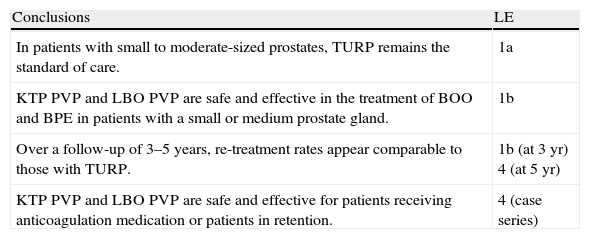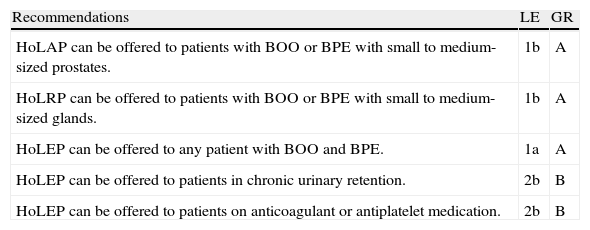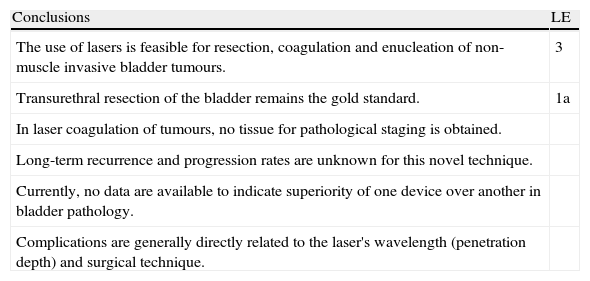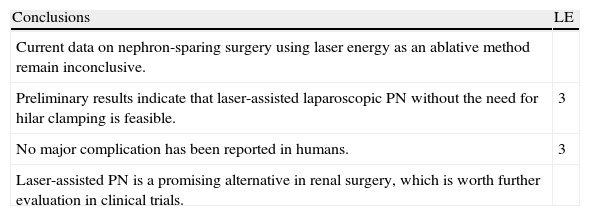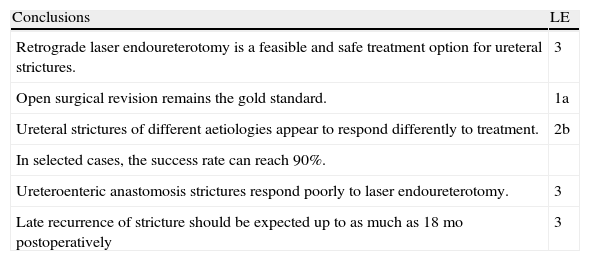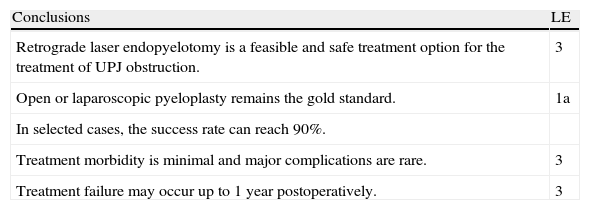The European Association of Urology (EAU) Guidelines Office has set up a guideline working panel to analyse the scientific evidence published in the world literature on lasers in urologic practice.
ObjectiveReview the physical background and physiologic and technical aspects of the use of lasers in urology, as well as current clinical results from these new and evolving technologies, together with recommendations for the application of lasers in urology. The primary objective of this structured presentation of the current evidence base in this area is to assist clinicians in making informed choices regarding the use of lasers in their practice.
Evidence acquisitionStructured literature searches using an expert consultant were designed for each section of this document. Searches were carried out in the Cochrane Database of Systematic Reviews, the Cochrane Central Register of Controlled Trials, and Medline and Embase on the Dialog/DataStar platform. The controlled terminology of the respective databases was used, and both Medical Subject Headings and EMTREE were analysed for relevant entry terms. One Cochrane review was identified.
Evidence synthesisDepending on the date of publication, the evidence for different laser treatments is heterogeneous. The available evidence allows treatments to be classified as safe alternatives for the treatment of bladder outlet obstruction in different clinical scenarios, such as refractory urinary retention, anticoagulation, and antiplatelet medication. Laser treatment for bladder cancer should only be used in a clinical trial setting or for patients who are not suitable for conventional treatment due to comorbidities or other complications. For the treatment of urinary stones and retrograde endoureterotomy, lasers provide a standard tool to augment the endourologic procedure.
ConclusionsIn benign prostatic obstruction (BPO), laser vaporisation, resection, or enucleation are alternative treatment options. The standard treatment for BPO remains transurethral resection of the prostate for small to moderate size prostates and open prostatectomy for large prostates. Laser energy is an optimal treatment method for disintegrating urinary stones. The use of lasers to treat bladder tumours and in laparoscopy remains investigational.
La Oficina de Guías Clínicas de la Asociación Europea de Urología (EAU) ha establecido un panel de trabajo de guías clínicas para analizar la evidencia científica publicada en la literatura mundial sobre láseres en la práctica urológica.
ObjetivoRevisar el origen físico y los aspectos fisiológicos y técnicos de la utilización de los láseres en urología, así como los actuales resultados clínicos de estas nuevas tecnologías en evolución, junto con recomendaciones para la aplicación de los láseres en urología. El objetivo principal de esta presentación estructurada de la base de la evidencia actual en esta área es ayudar a los médicos a tomar decisiones informadas con respecto al uso de los láseres en su práctica.
Adquisición de la evidenciaSe diseñaron búsquedas estructuradas de la literatura que utilizan un consultor experto para cada sección de este documento. Se realizaron búsquedas en la Base de Datos Cochrane de Revisiones Sistemáticas, el Registro Cochrane Central de Ensayos Controlados y Medline y Embase en la plataforma Dialog/DataStar. Se utilizó la terminología controlada de las respectivas bases de datos y se analizaron tanto Medical Subject Headings como EMTREE para conocer los términos de entrada relevantes. Se identificó una revisión Cochrane.
Síntesis de la evidenciaDependiendo de la fecha de publicación, la evidencia de los diferentes tratamientos con láser es heterogénea. La evidencia disponible permite clasificar los tratamientos como alternativas seguras para el tratamiento de la obstrucción del tracto urinario inferior en diferentes escenarios clínicos tales como la retención urinaria refractaria, la anticoagulación y la medicación antiplaquetaria. El tratamiento con láser para el cáncer de vejiga sólo se debe utilizar en un ensayo clínico o para pacientes que no son adecuados para el tratamiento convencional debido a comorbilidades u otras complicaciones. Para el tratamiento de la litiasis urinaria y la endoureterotomía retrógrada, los láseres proporcionan una herramienta estándar para aumentar el procedimiento endourológico.
ConclusionesEn la obstrucción prostática benigna (OPB), la vaporización por láser, la resección o la enucleación son opciones de tratamiento alternativas. El tratamiento estándar para la OPB sigue siendo la resección transuretral de la próstata para próstatas de tamaño pequeño a moderado y la prostatectomía abierta para próstatas grandes. La energía láser es un método de tratamiento óptimo para la desintegración de cálculos urinarios. El uso de láseres para el tratamiento de los tumores de vejiga y en la laparoscopia sigue en investigación.






